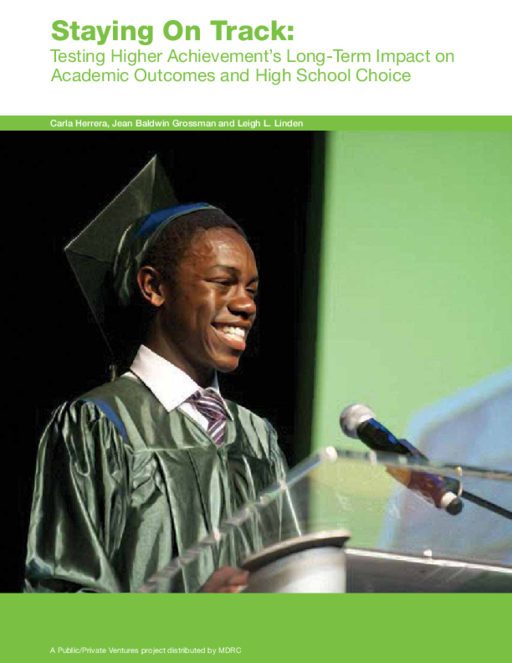Breadcrumb
- Wallace
- Reports
- Staying On Track Testing Higher ...
Staying On Track
Testing Higher Achievement’s Long-Term Impact on Academic Outcomes and High School Choice

Overview
More
Less
- Author(s)
- Carla Herrera, Jean Grossman, and Leigh L. Linden
- Publisher(s)
- MDRC
Summary
How can national nonprofits provide learning opportunities to as many children as possible while maintaining program quality and financial stability?
In November 2013, Wallace’s expanded learning grantees gathered in Brooklyn, N.Y., along with researchers, experts in nonprofit strategy, communications professionals, and foundation staff members to talk about the challenge of “scaling up” both effectively and responsibly. This report captures the resulting lively discussion. It features conference participants speaking in their own words about doing “the jujitsu” that turns a small innovation into a large-scale solution; avoiding the “sugar high” of too-rapid expansion; providing children with the educational equivalent of “a hand-tailored suit” rather than one-size-fits-all programming; and “supporting the ‘What Works Movement,’” a reference to the Obama administration’s strategy of investing in nonprofits that have shown they can deliver positive results.
The report describes communications efforts intended to establish the need for expanded learning opportunities. It also highlights the results of a project to determine what it means for an expanded learning program to be aligned with the Common Core State Standards.


